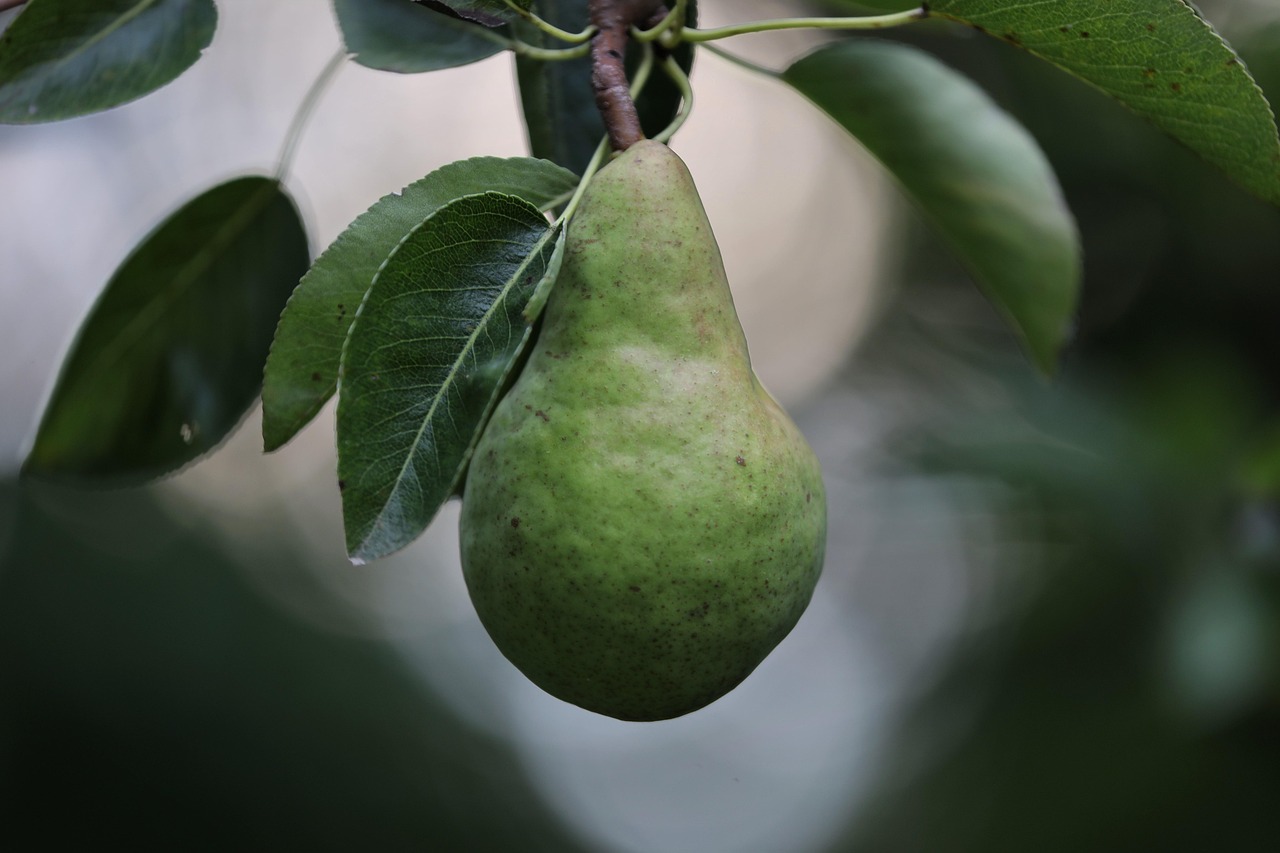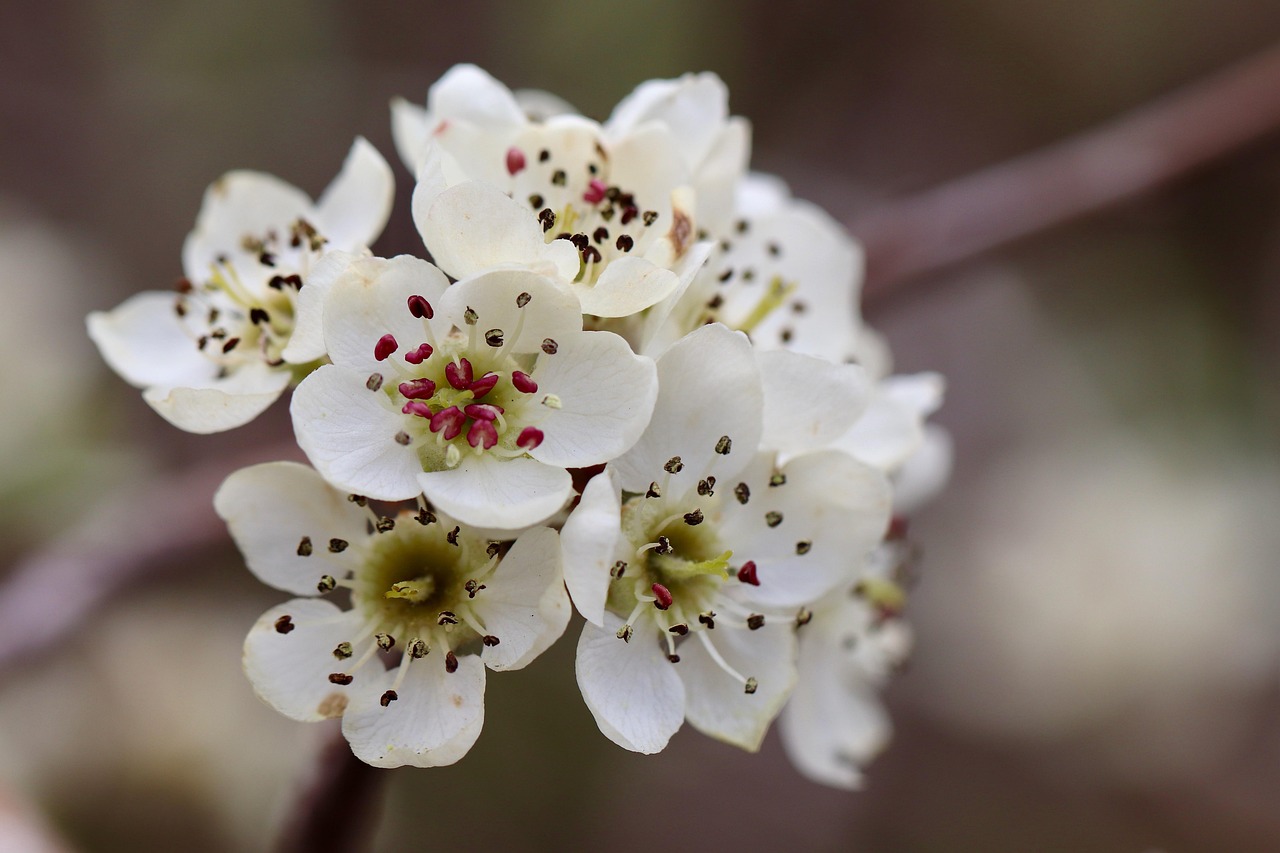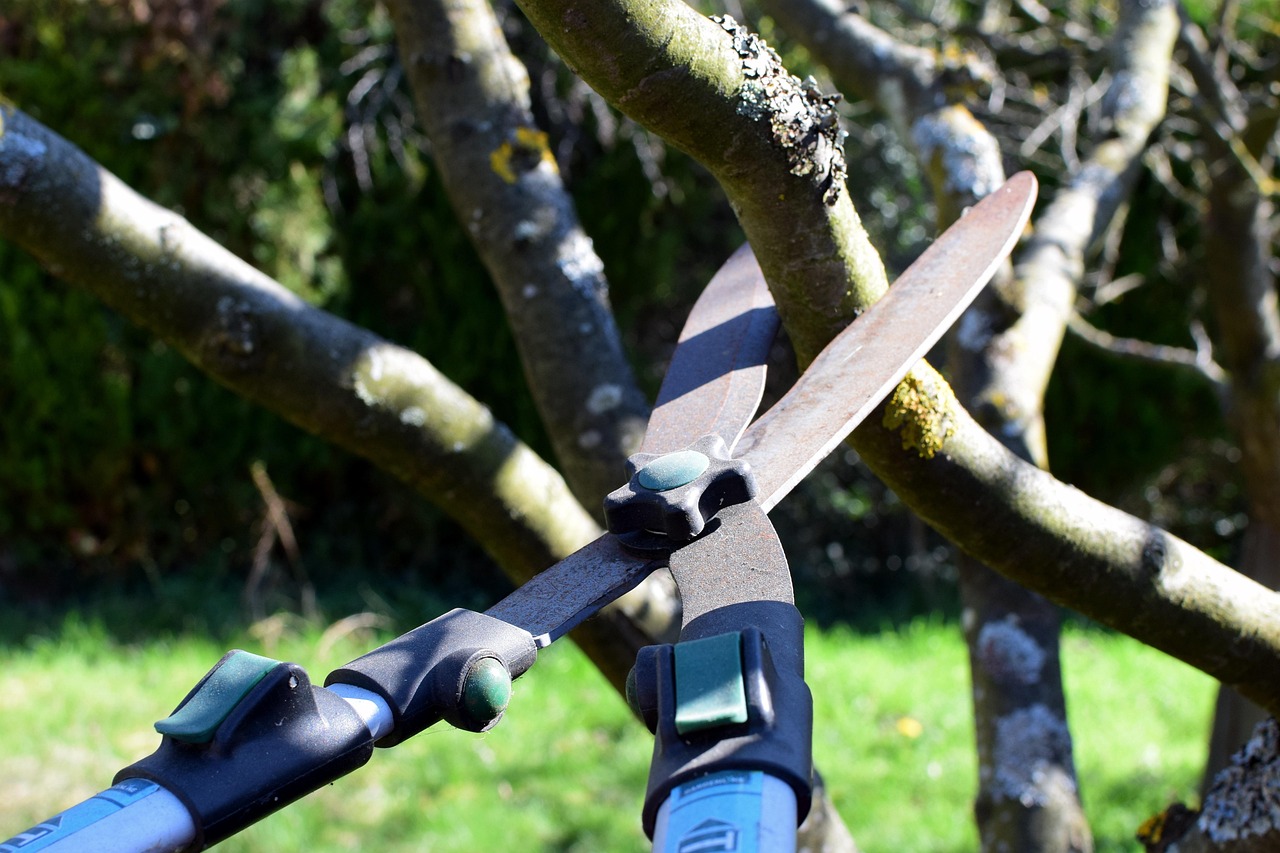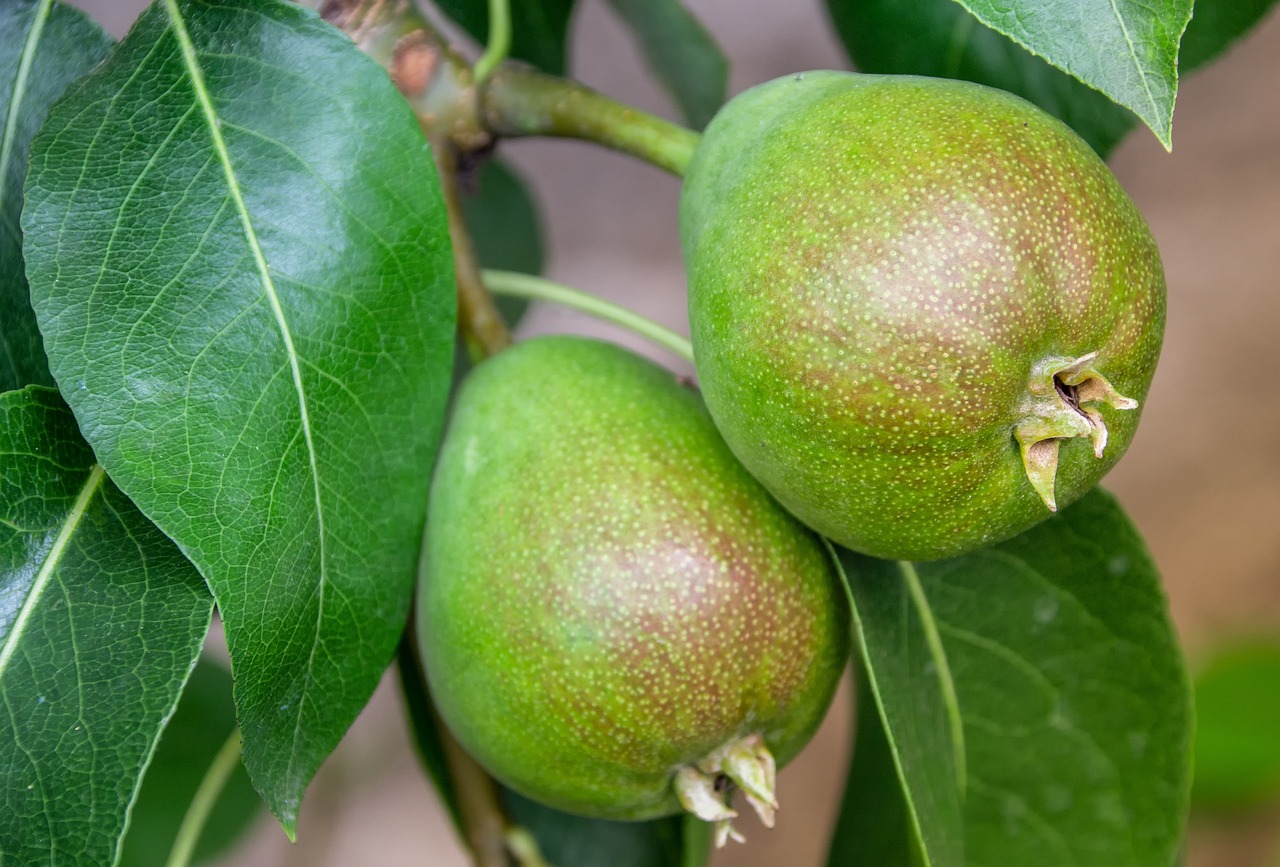Pear tree pruning enhances the aesthetic appeal of decorative landscapes while promoting healthy growth. Proper techniques can shape trees, encourage flowering, and ensure optimal fruit production. This practice is essential for maintaining the beauty and health of pear trees in any garden or landscape design.
Pear trees are popular choices for decorative landscapes due to their stunning blooms and lush foliage. They not only provide beauty but also produce delicious fruit. However, to maximize their visual impact and health, regular pruning is necessary. Pruning involves removing certain branches to improve air circulation, sunlight penetration, and overall tree structure. It also helps prevent diseases and pest infestations.

Understanding the best time to prune is crucial. The ideal period for pruning pear trees is during late winter or early spring when the trees are still dormant. This timing minimizes stress on the tree and reduces the risk of injury from cold temperatures. However, it is also vital to consider the specific type of pear tree, as different varieties may have unique pruning requirements.
The Benefits of Pruning Pear Trees
Pruning pear trees offers several advantages that contribute to their health and visual appeal. Here are key benefits:
- Improved Air Circulation: Pruning opens up the canopy, allowing air to flow freely. This reduces the risk of fungal diseases.
- Better Sunlight Exposure: Removing excess branches helps sunlight reach all parts of the tree, promoting even growth.
- Enhanced Shape and Structure: Regular pruning helps maintain the desired shape, making the tree more attractive in landscapes.
- Increased Fruit Production: Proper pruning techniques encourage better flowering and fruiting, leading to a bountiful harvest.
- Healthier Trees: By removing dead or diseased branches, pruning promotes overall tree health and longevity.
To achieve these benefits, it is essential to follow recommended pruning practices. Knowing the right tools and techniques can make a significant difference in the outcome.

Essential Tools for Pruning Pear Trees
Before starting the pruning process, gather the necessary tools. Having the right equipment ensures a clean cut and minimizes damage to the tree. Here are some essential tools:
- Pruning Shears: Ideal for small branches, these hand-held tools offer precision and control.
- Loppers: For larger branches, loppers provide extra leverage and cutting power.
- Saw: A handsaw or pole saw may be necessary for removing thicker branches that cannot be cut with shears or loppers.
- Gloves: Protect your hands from sharp tools and thorny branches.
- Bypass Pruners: These are essential for making clean cuts on living branches without damaging them.
Pruning Techniques for Pear Trees
Pruning techniques can vary based on the desired shape and health of the pear tree. Here are some common methods used:
- Crown Thinning: This technique involves selectively removing branches from the crown of the tree to improve light penetration and air circulation. Aim to remove no more than 20% of the canopy at one time.
- Crown Raising: This method removes lower branches to create clearance beneath the tree. It is particularly useful for landscape aesthetics and maintenance.
- Crown Reduction: To reduce the height or spread of a tree, selectively prune back the tips of branches. This method helps control size while maintaining overall shape.
- Deadheading: Remove dead or damaged branches throughout the growing season. This encourages new growth and maintains a neat appearance.
Each technique serves a specific purpose, and understanding how to apply them effectively can greatly enhance the beauty of your pear trees in decorative landscapes.

Key Considerations When Pruning
When pruning pear trees, several considerations should be kept in mind to achieve optimal results:
- Timing: Prune during late winter or early spring before new growth begins.
- Branch Selection: Focus on removing dead, damaged, or crossing branches first.
- Cutting Angle: Make clean cuts at a slight angle to promote healing and prevent water accumulation on cuts.
- Avoid Over-Pruning: Excessive pruning can stress the tree and reduce fruit production.
By following these guidelines, gardeners can ensure their pear trees thrive in ornamental settings while remaining healthy and productive.
Common Pear Tree Varieties for Landscaping
When selecting pear trees for decorative landscapes, it is essential to consider the variety. Different species offer varying aesthetic qualities and growth habits. Here are some popular pear tree varieties commonly used in landscaping:

- Callery Pear (Pyrus calleryana): This tree is known for its stunning white flowers in spring and beautiful fall foliage. It has a pyramidal shape that adds height and structure to gardens.
- Bartlett Pear (Pyrus communis): A classic choice, Bartlett pear produces sweet fruit and features attractive blossoms. Its rounded shape makes it suitable for small spaces.
- Bosc Pear (Pyrus communis): This variety is recognized for its distinctive, elongated shape and rich flavor. It also provides a beautiful display of fall colors.
- Harcourt Pear (Pyrus communis): Harcourt pears are decorative and fruitful. Their vigorous growth and dense foliage create an excellent screen or hedge.
- Asian Pear (Pyrus pyrifolia): Known for its crisp texture and unique flavor, Asian pears also feature lovely blossoms and can be grown as ornamental trees.
Pruning Techniques for Specific Varieties
Each pear tree variety may have unique pruning requirements. Understanding these variations helps ensure the best results. Here are some specific pruning techniques tailored for common pear tree varieties:
Callery Pear
For the Callery pear, focus on crown thinning to maintain its attractive shape. Remove any crossing branches to prevent crowding and promote healthy growth.
Bartlett Pear
Bartlett pears benefit from light pruning during their dormant phase. Aim to remove dead or diseased wood while shaping the tree to encourage an open center for sunlight exposure.
Bosc Pear
Regularly prune Bosc pears to maintain their size. This variety responds well to crown reduction techniques, which promote better fruit production.
Asian Pear
Asian pears require selective pruning to enhance airflow around the fruit. Remove excess branches while ensuring that the tree maintains a balanced shape.
Seasonal Care Following Pruning
After pruning, proper care is essential to help the tree recover and thrive. Here are some important care steps to follow throughout the growing season:
- Watering: Ensure the tree receives adequate water, especially during dry periods. Deep watering encourages strong root development.
- Mulching: Apply a layer of mulch around the base of the tree to retain moisture and suppress weeds. Organic mulch also enriches the soil as it decomposes.
- Fertilizing: Use a balanced fertilizer in early spring to provide essential nutrients. Avoid over-fertilizing, as this can lead to excessive growth at the expense of fruit production.
- Pest Control: Monitor for common pests such as aphids or pear psylla. Implement organic pest control methods when necessary to protect your trees.
Common Pests and Diseases Affecting Pear Trees
Pear trees, like any other plants, can be susceptible to various pests and diseases. Early detection is crucial for effective management. Here are some common issues that may arise:
| Pest/Disease | Description | Treatment |
|---|---|---|
| Aphids | Small insects that suck sap from leaves, causing curling and yellowing. | Use insecticidal soap or introduce natural predators like ladybugs. |
| Pear Psylla | A tiny insect that can cause leaf drop and reduce fruit quality. | Apply horticultural oil or insecticidal sprays at the right time. |
| Crown Gall | A bacterial disease leading to galls on roots and stems, which can weaken the plant. | Remove infected plant parts and practice good sanitation. |
| Fire Blight | A bacterial disease characterized by blackened, wilted shoots resembling fire damage. | Prune affected areas promptly and apply appropriate bactericides. |
Being proactive in identifying and managing these issues can help maintain healthy pear trees in decorative landscapes.
Pear Trees in Landscape Design
Pear trees can serve various roles in landscape design, enhancing both aesthetic appeal and functionality. Here are some creative ways to incorporate them into your garden:
- Specimen Trees: Use a single, well-pruned pear tree as a focal point in a garden bed.
- Hedges: Plant multiple pear trees in a row for a natural hedge that provides privacy and beauty.
- Shade Trees: Strategically position larger varieties to create shaded areas for relaxation or outdoor dining.
- Cottage Gardens: Integrate pear trees with flowering plants for a charming cottage-style effect.
The versatility of pear trees allows them to complement various landscape styles while providing seasonal interest with blooms, foliage, and fruit.
Seasonal Changes and Their Impact on Pruning
The changing seasons significantly influence the growth patterns and needs of pear trees. Understanding these seasonal changes is essential for effective pruning and overall care. Each season presents unique opportunities and challenges for pear tree management.
Spring: The Season of Growth
In spring, pear trees begin to emerge from dormancy. Buds swell and flowers bloom, making it an important season for observation. Here are some key points to consider:
- Monitoring Growth: Observe new growth patterns and flower development. This will help you understand which branches are thriving.
- Light Pruning: If necessary, light pruning can be done in early spring before the buds fully open. Remove any dead or damaged branches to promote healthy new growth.
Summer: Maintenance and Care
During the summer, the focus shifts to maintaining tree health and encouraging fruit development. Proper care during this season can enhance the overall appearance of the tree.
- Regular Watering: Ensure trees receive adequate water, especially during dry spells, to support fruit growth and overall health.
- Pest Monitoring: Keep a close eye on pest activity. Early detection allows for timely intervention to minimize damage.
- Summer Pruning: Light pruning can also be performed in summer to control size and shape. Remove any unwanted growth or suckers that drain energy from the main branches.
Fall: Preparing for Dormancy
As fall approaches, pear trees start preparing for winter dormancy. This is a critical time for final care measures:
- Fertilization: Apply a balanced fertilizer to support root development before winter. This helps the tree store nutrients for the dormant period.
- Watering Regimen: Continue watering until the ground freezes to ensure that roots are well-hydrated.
- Final Pruning: Assess the tree’s structure and perform any necessary pruning to maintain shape and remove dead or diseased wood.
Winter: Dormant Season Care
Winter is the dormant season for pear trees, making it an ideal time for more extensive pruning practices. Here are important considerations:
- Major Pruning: Late winter is the best time for significant pruning activities. Remove excess branches to promote a healthy structure when trees are dormant.
- Sanitation Practices: Clean your tools thoroughly between cuts to prevent the spread of disease. This is especially important in winter when trees are vulnerable.
Advanced Pruning Techniques
For experienced gardeners, advanced pruning techniques can further enhance the health and aesthetic appeal of pear trees. These methods require careful consideration and practice.
Espalier Pruning
Espalier is an artistic pruning method that trains trees to grow flat against a wall or trellis. This technique is especially useful in small spaces.
- Framework Establishment: Start by establishing a framework with horizontal branches tied to a support structure.
- Regular Maintenance: Continuously prune to maintain the shape and encourage lateral growth, creating a beautiful living wall.
Crown Restoration Pruning
Crown restoration is used on neglected or overgrown trees. This technique aims to restore the tree’s natural shape while promoting healthy growth.
- Selective Thinning: Remove competing leaders and excessive branching. Focus on opening up the canopy without compromising tree health.
- Gradual Approach: Avoid removing more than one-third of the canopy in a single season to prevent stress on the tree.
The Role of Soil and Environmental Factors
The health of pear trees is significantly influenced by soil quality and environmental conditions. Understanding these factors can enhance your pruning practices and overall care strategy.
Soil Quality
Pear trees thrive in well-draining soil rich in organic matter. Testing your soil can provide valuable insights into nutrient levels and pH balance.
- Nutrient Management: Incorporate organic compost or well-rotted manure into the soil before planting or during feeding periods to enhance soil fertility.
- Drainage Considerations: Ensure proper drainage to prevent root rot. Heavy clay soils may require amendments like sand or organic matter to improve drainage.
Environmental Factors
The local climate plays a significant role in the growth and health of pear trees. Different varieties may have varying tolerances to temperature and moisture levels.
- Temperature Extremes: Protect young trees from extreme cold or heat by providing shade or insulation as necessary.
- Moisture Levels: Monitor rainfall and irrigation closely, especially during dry spells, as fluctuations can impact tree health and fruit quality.
A holistic understanding of these elements allows gardeners to make informed decisions about pruning and caring for their pear trees, ensuring they flourish in decorative landscapes.
Additional Tips for Successful Pear Tree Pruning
To ensure your pear trees thrive in decorative landscapes, consider these additional tips that complement the pruning techniques and care strategies discussed earlier.
Understanding Growth Habits
Each pear tree variety has unique growth habits. Familiarizing yourself with these can enhance your pruning effectiveness:
- Vigorous Growers: Some varieties, like the Callery pear, tend to grow rapidly. Regular pruning is essential to manage their size and maintain an appealing shape.
- Slower Growers: Varieties like Bosc pears may require less frequent pruning. Focus on shaping rather than aggressive cutting.
Pruning Techniques for Young Trees
Young pear trees benefit from formative pruning to establish a strong structure. Here are key practices:
- Central Leader Training: Encourage a central leader by selecting one strong branch to be the main trunk. Remove competing branches early to support upward growth.
- Layered Structure: Aim for a layered branch structure to allow light penetration and air circulation as the tree matures.
Utilizing Technology in Tree Care
Consider employing technology to enhance your pear tree care practices:
- Soil Testing Kits: Use soil testing kits to determine nutrient levels and pH, allowing for tailored fertilization strategies.
- Irrigation Systems: Automated irrigation systems can help maintain consistent moisture levels during critical growth phases.
- Pest Monitoring Apps: Utilize pest monitoring applications to stay informed about local pest activity and receive timely alerts.
The Environmental Impact of Pear Trees
Pear trees play a vital role in the environment beyond their aesthetic appeal and fruit production. Here are some benefits they provide:
- Ecosystem Services: Pear trees contribute to local ecosystems by providing habitat for birds and beneficial insects, thereby supporting biodiversity.
- Carbon Sequestration: Like all trees, pear trees absorb carbon dioxide, helping to mitigate climate change and improve air quality.
- Soil Stabilization: The root systems of pear trees help prevent soil erosion and enhance soil structure.
Final Thoughts
Pear tree pruning is an essential practice for anyone looking to enhance their decorative landscapes while ensuring healthy growth and abundant fruit production. Understanding the specifics of different pear tree varieties, seasonal care needs, and advanced pruning techniques can significantly improve the overall health and appearance of your trees.
By incorporating proper pruning methods, monitoring environmental conditions, and maintaining soil health, you can create a stunning landscape feature that provides beauty throughout the seasons. Whether you opt for a single specimen tree or a row of hedges, pear trees offer versatility and charm that can elevate any garden design.
As you embark on your journey of pear tree cultivation, remember that patience and attention to detail are key. Engaging with these magnificent trees allows you not only to enjoy their aesthetic benefits but also to appreciate the broader ecological contributions they make. Happy gardening!
